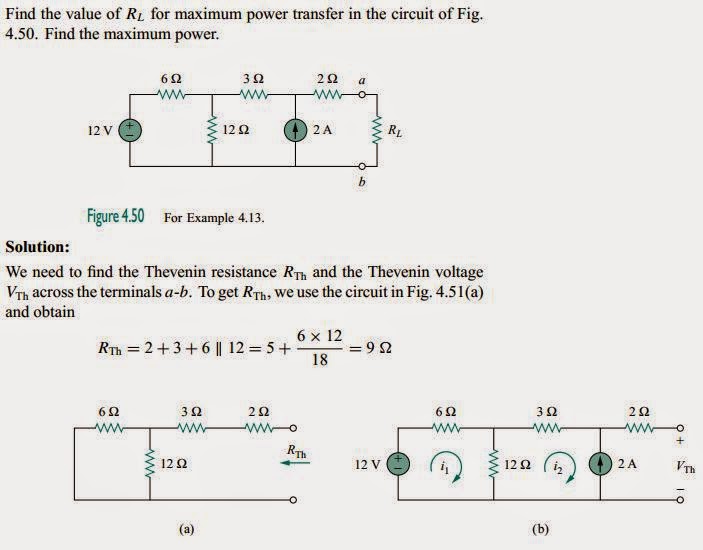Now that we have considered the three passive elements (resistors, capacitors, and inductors) and one active element (the op amp) individually, we are prepared to consider circuits that contain various combinations of two or three of the passive elements. In this chapter, we shall examine two types of simple circuits: a circuit comprising a resistor and capacitor and a circuit comprising a resistor and an inductor. These are called RC and RL circuits, respectively. As simple as these circuits are, they find continual applications in electronics, communications, and control systems, as we shall see.
We carry out the analysis of RC and RLcircuits by applying Kirchhoff’s laws, as we did for resistive circuits. The only difference is that applying Kirchhoff’s laws to purely resistive circuits results in algebraic equations, while applying the laws to RC and RL circuits produces differential equations, which are more difficult to solve than algebraic equations. The differential equations resulting from analyzing RC and RL circuits are of the first order. Hence, the circuits are collectively known as first-order circuits.
A first-order circuit is characterized by a first-order differential equation.
In addition to there being two types of first-order circuits (RC and RL), there are two ways to excite the circuits. The first way is by initial conditions of the storage elements in the circuits. In these socalled source-free circuits, we assume that energy is initially stored in the capacitive or inductive element. The energy causes current to flow in the circuit and is gradually dissipated in the resistors. Although sourcefree circuits are by definition free of independent sources, they may have dependent sources. The second way of exciting first-order circuits is by independent sources. In this chapter, the independent sources we will consider are dc sources. (In later chapters, we shall consider sinusoidal and exponential sources.) The two types of first-order circuits and the two ways of exciting them add up to the four possible situations we will study in this blog.
Finally, we consider four typical applications of RC and RL circuits: delay and relay circuits, a photoflash unit, and an automobile ignition circuit.
"The Source-Free RC Circuit"
A source-free RC circuit occurs when its dc source is suddenly disconnected. The energy already stored in the capacitor is released to the resistors.
Consider a series combination of a resistor and an initially charged capacitor, as shown in Figure below.
(The resistor and capacitor may be the equivalent resistance and equivalent capacitance of combinations of resistors and capacitors.) Our objective is to determine the circuit response, which, for pedagogic reasons, we assume to be the voltage v(t) across the capacitor. Since the capacitor is initially charged, we can assume that
at time t = 0, the initial voltage is
v(0) = Vo
with the corresponding value of the energy stored as
In terms of the time constant, equation above will be,
Videos:
Applying KCL at the top node of the circuit above, we get,
ic + iR = 0
By definition, iC = C dv/dt and iR = v/R. Thus,
But from the initial conditions, v(0) = A = V0. Hence,
This shows that the voltage response of the RC circuit is an exponential decay of the initial voltage. Since the response is due to the initial energy stored and the physical characteristics of the circuit and not due to some external voltage or current source, it is called the natural response of the circuit.
The natural response of a circuit refers to the behavior (in terms of voltages and currents) of the circuit itself, with no external sources of excitation.
The time constant of a circuit is the time required for the response to decay by a factor of 1/e or 36.8 percent of its initial value.
τ = RC
Example:
~
~
"The Source-Free RL Circuit"
Consider the series connection of a resistor and an inductor, as shown in Fig. below.
Our goal is to determine the circuit response, which we will assume to be the current i(t) through the inductor. We select the inductor current as the response in order to take advantage of the idea that the inductor current cannot change instantaneously. At t = 0, we assume that the inductor has an initial current I0, or
i(0) = Io
with the corresponding energy stored in the inductor as
This shows that the natural response of the RL circuit is an exponential decay of the initial current. The current response is shown in Figure below.
The time constant for the RL circuit is,
Therefore we will have,
Example:
Some Learnings:
- First order circuit are circuits that contain only one energy storage element, a capacitor or an inductor.
~ - There are only two possible first order circuits, and that are RC (Resistor and Capacitor) & RC (Resistor and Inductor).
~ - The time constant is the same regardless of what the output is defined to be.
~ - When a circuit has a capacitor/inductor, a resistor and a dependent source. We use Thevenin's theorem and its equivalent can be found at the terminals of a capacitor or an inductor.
~
For some information, you can watch the video below:
That's all. Thank You for visiting my blog.
GOD Bless! :)
By:
AYALA, ARNY S. BSECE -3
ECE 311
Professor:
ENGR. JAY S. VILLAN, MEP - EE


















































